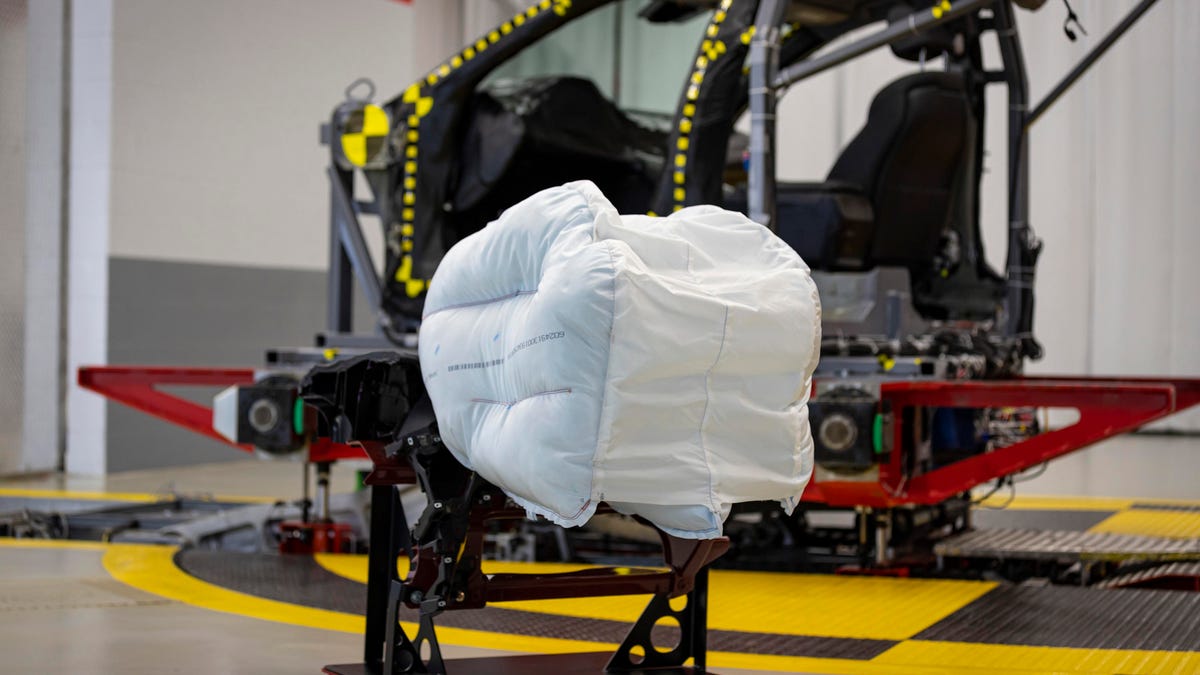Honda's new airbags act like a baseball glove for your face
Not just one inflatable element, but three work to protect the occupant.

It's like a glove for your face in the event of a crash.
The overall concept of an airbag's purpose hasn't changed drastically over the decades. To this day, it's the best line of passive defense in a crash aside from a seatbelt. Honda saw room for improvement, however, and debuted its latest airbag design on Friday.
While the concept remains the same -- the goal is to always keep occupants as stationary as possible in a crash -- the new airbag boasts not one, but three inflatable elements. Think of the Honda airbag like a catcher's glove in baseball. There's a main element, like a traditional airbag, but also two side chambers that project outward. With the two extra elements, the airbag more effectively "catches" a driver or passenger's head and keeps it there.
The idea is to minimize the possibility of an occupant's head and face sliding off a traditional airbag or rotating extensively. When this happens, the chance of injury increases. The new airbag also includes what Honda called a "sail panel" that stretches between the two side panels to cradle a driver or passenger's head even better and pull them inward.
See how the airbag cradles the crash dummy's head? That's good.
The Japanese automaker said this particular kind of airbag may be more effective in other various frontal collisions aside from head-on impacts. Angled crashes between a vehicle and another vehicle are common, as are angled crashes between a vehicle and a stationary object.
Honda didn't say it explicitly, but the thinking sounds a lot like the IIHS' small-overlap tests. Here, a vehicle strikes a stationary object mostly with the driver's or passenger's side of the car's frontal area. It's not a direct head-on crash and simulates crashes such as when a driver unwittingly drifts across a double yellow line.
Now that engineering has wrapped up at Honda's research and development center in Ohio, the automaker plans to implement the new airbags in its US-spec vehicles starting in 2020.

